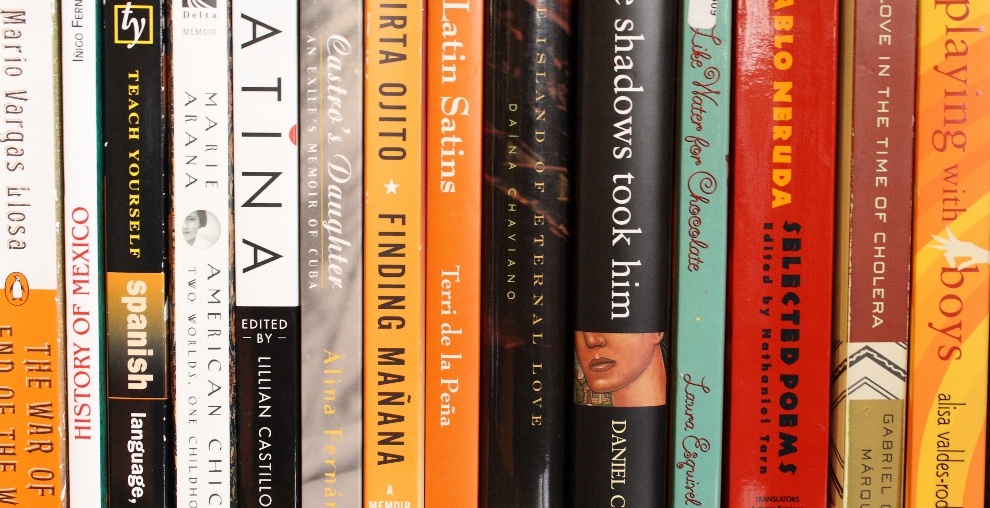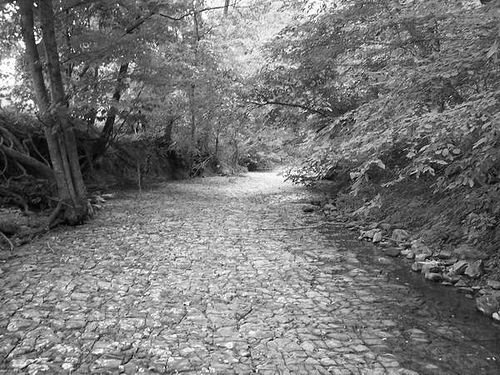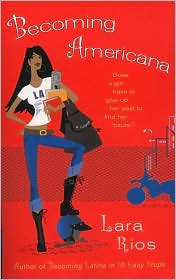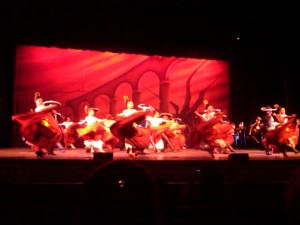Archive for Authors

12
Oct 2011
The book that started it all . . .
posted in: Authors, books My interest in Latino literature began with one book, purchased on an unassuming trip to the bookstore when I was about 14 years old. That book was Woman Hollering Creek by Sandra Cisneros. Reading this book made me realize that there wasn’t a generic, white “normal” in which books are written. After reading the book, I realized that books can convey a sense of culture in such a subtle way that just “gets it.” Like most great books, I read and loved this book when I was young, and re-reading it over the years always conveys a new sense of meaning. Even now, re-reading the stories in preparation for writing this post, I had new understanding while reading the book.
My interest in Latino literature began with one book, purchased on an unassuming trip to the bookstore when I was about 14 years old. That book was Woman Hollering Creek by Sandra Cisneros. Reading this book made me realize that there wasn’t a generic, white “normal” in which books are written. After reading the book, I realized that books can convey a sense of culture in such a subtle way that just “gets it.” Like most great books, I read and loved this book when I was young, and re-reading it over the years always conveys a new sense of meaning. Even now, re-reading the stories in preparation for writing this post, I had new understanding while reading the book.
Woman Hollering Creek is a collection of short stories – vignettes, really – that highlight stories about different women. “My Lucy Friend Who Smells Like Corn” opens with a little girl:
Lucy Anguiano, Texas girl who smells like corn, like Frito Bandito chips, like tortillas, something like that warm smell of nixtamal or bread the way her head smells when she’s leaning close to you . . .
I think I gasped the first time I read those lines. Somebody else knows that there’s always that one person who always smells like the steam rising from a pot of tamales! Keep reading and you’ll discover a writing that is vivid and peppered with phrases in Spanish. The way I talk. This is the first book I ever read like that.
The stories start out with young voices and as you get further through the book the narrators become older, with complex problems. “One Holy Night” is the story of a young girl, seduced by an older man who disappears when she becomes pregnant:
“We heard nothing for a long time. Abuelita took me out of school when my uniform got tight around the belly and said it was a shame I wouldn’t be able to graduate with the other eighth graders.”
Another sucker punch! This is the kind of writing I live for – something raw and so real you almost can’t believe it.
This time around, the title story “Woman Hollering Creek” had a profound meaning to me, because now I am a mother. If you are a mother, you know that your whole perspective on the world changes the moment you give birth. This is the story of Cleófilas, a Mexican immigrant who ends up alone in the U.S. with an abusive husband, a son, and a baby on the way. When she moves into the town, she takes note of the strangely named creek (which is real, by the way). As time goes on, she begins to wonder if it is really named after La Llorona.
“Perhaps La Llorona is the one they named the creek after, she thinks, remembering all the stories she learned as a child.
La Llorona is calling to her. She is sure of it. Cleófilas sets the baby’s Donald Duck blanket on the grass. Listens. The day sky turning to night. The baby pulling up fistfuls of grass and laughing. La Llorona. Wonders if something as quiet as this drives a woman to the darkness under the trees.”
That darkness is something I think that all mothers know about but is a taboo topic. The spectre of depression that looms over a mother and her newborn child. The power of birth is so forceful I think it is only natural that the flip side of all that joy is just as big, making it a terrible thing.
Do you remember La Llorona from your childhood? My torturous cousins blended the stories of La Llorona and Bloody Mary, saying that she would appear if you lit candles in a dark bathroom and looked in the mirror and flushed the toilet and goodness knows what else. I think I ran away from the toilet each time I flushed it for the next 10 years.
Well, for me this is the book that started my quest to find others like it. I’ve read many more, and I have a giant stack plus a library list that I’m planning on reading — and I’ll be blogging about it all. Do you have a similar story? Tell me about it!
no comments3
Oct 2011
Book review: Becoming Americana
posted in: Authors, booksThe last weekend roundup was really short. Don’t worry, I wasn’t being curt. I was getting ready to represent the Hispanic community with the group I volunteer with in a local parade! I wore a traditional dress and even dressed my daughter in her little Puerto Rican dress. (If you’re wondering why a Tejana puts her daughter in that dress, it’s because my daughter is Mexi-Rican, LOL).
Becoming Americana, by Lara Rios, is a 2006 book I rescued from the clearance bin at Books-A-Million. While researching the author, who is argentina, I found that she is now writing under the nom de plume Julia Amante. As Lara Rios, she wrote Becoming Americana and Becoming Latina in 10 Easy Steps, as a well as a blog that appears not to be updated anymore. As Amante she has scribed two more novels, Evenings at the Argentine Club and Say You’ll be Mine, and a blog.
Phew! Now that we’ve got that straightened out, let’s get back to the book. The book is about Lupe, a very feisty young woman that survived the hard streets of East L.A. and her even meaner cholo brother. But Lupe manages to turn her life around, attending college and finding a professional job, and crushing on her mentor, Nash. Who isn’t reciprocating. Oops! But no worries – now Will steps in as boyfriend (and a tug-of-war start in her heart). But Lupe, who at first wants to volunteer at the local center for at-risk teens and attend college, becomes distracted by the men in her life (including her pendejo brother) and the taste of a real job and real money. The overall theme of the book is the pull in both directions between Mexican heritage and American lifestyle – something I think all Chicanos know very well.
Some details of Lupe’s hardscrabble life are just gut-wrenching and hard to read. Nevertheless, there are still the elements of chica-lit which make this a light beach read. I could relate to the novel because I know how easy it is to become distracted from your education by life’s necessities, family, and love relationships. I think Rios’s ultimate message to women is that they should choose what’s best for themselves. In chapter 22, Rios writes, “Becoming Americana involves breaking the unwritten family code of ‘family first.’ The new mantra becomes ‘me first.'” As a Latina, that is something heartbreaking to realize. Read the book, and if you don’t relate already, you’ll understand the meaning.
1 comment28
Sep 2011
The Latino List airs on HBO today
posted in: Authors, Documentaries, MiscellaneousAuthor Sandra Cisneros (one of my favorites!) will be featured on The Latino List, an HBO documentary featuring successful Latinos today, September 28 and 29, 2011. The list does include several actors and music stars, but I was pleased to see at least one author (Cisneros) and several other non-celebrities! ¡Que orgullo! Check it out here.
no comments21
Sep 2011
Book Review: Dancing with Butterflies
posted in: Authors, booksBack when my mom was a kid, learning ballet folklórico was practically mandatory. Unfortunately, it was something I didn’t learn, but have always admired. As a special outing near my birthday last year, my husband took me to see the Ballet Folklórico de México at a performance they did with our local Community Ballet Association. We – and other brave audience members – drove through a severe ice storm to see the show, and it was worth it. The show was breathtaking, and included wonderful mariachis and grand costumes, all of which I didn’t expect.
Reyna Grande brings readers into the world of a folklórico dance troupe, weaving the stories of four women, Yesenia, Elena, Adriana, and Soledad. Yesenia, the founder of dance group Alegría, faces demons of middle age and a long marriage. Elena, a teacher, finds her life turned upside down after the loss of her pregnancy. Adriana, Elena’s sister, rebels against a rough childhood through loose relationships with hard men and distancing herself from Elena. Soledad is an illegal immigrant who finds her dream of becoming a costume designer may be dashed forever. The story is told alternating between each woman’s point of view; their lives at first tangent circles that slowly begin to overlap.
What I really liked about this book is that it tells FRESH stories about four women. Void of cliché character development, Grande presents a nuanced vision of the lives of women without judging, preaching, or stereotyping. The reader of this book will come away with not only stories about individuals but stories about relationships. Each woman faces her own challenges in her romantic relationships, but they also face challenges as sisters and friends. In the end, Grande shows us that friendships are always what we come back to after facing life’s challenges.
no comments

























